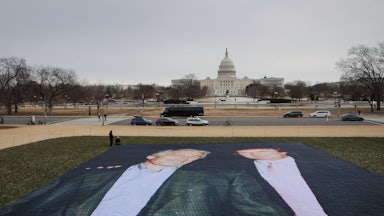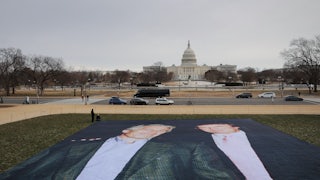A study released on Wednesday by the World Meteorological Organization found an 80 percent likelihood that at least one of the next five years will break new heat records, surpassing 2024 to become the hottest year ever recorded. The National Weather Service has predicted that this summer will be among the hottest ever in the United States. The Trump administration, meanwhile, is taking a chain saw to programs that keep people alive when temperatures soar.
As Republicans attempt to slash Inflation Reduction Act subsidies for renewable energy and electric vehicles, drastic cuts to programs that ostensibly have nothing to do with climate change could put more people at risk of getting sick and dying from extreme heat.
Case in point is the relatively low-profile Low Income Heating and Energy Assistance Program, known as LIHEAP. Created by Congress in 1981 as a means to help people afford the costs of heating and cooling their homes, it currently helps some 6.2 million people pay their bills. In early April, the Trump administration fired the program’s entire staff of fewer than 30 people, whose jobs were housed within Robert F. Kennedy’s Department of Health and Human Services. Congress allocated $4.1 billion to LIHEAP this fiscal year, about 90 percent of which had already been distributed to states by the time the administration decided to purge its staff. That leaves $378 million left to be given out, and no one left to do it. The White House’s 2026 discretionary budget proposes eliminating LIHEAP altogether.
LIHEAP’s budget isn’t a massive line item for the federal government, but it could be the difference between life and death for those who depend on it to keep their homes from turning into ovens. Roughly two million households across the Northeast rely on the program. In some of those states, more than 50 percent of LIHEAP users are over the age of 60—populations that are especially vulnerable to extreme heat. One Virginia-wide study found that zip codes with higher percentages of residents 65 and older were associated with a 23 percent higher risk of heat-related emergency room visits and hospital admissions in high temperatures.
Keeping homes cooler can prevent those outcomes, but doing so is unaffordable for many. Roughly 17 percent of U.S. residents spend at least a tenth of their annual income on energy. One in four people here report keeping their homes at unsafe temperatures in order to save money. In Arizona’s Maricopa County last year, for instance, 138 people died indoors of heat-related causes; 18 percent of those deaths occurred in homes where the air conditioning either wasn’t turned on or wasn’t working properly. Pennsylvania has canceled an LIHEAP program that provides free air conditioning units and fans to qualifying households. While those cuts are due to leftover American Rescue Act funds drying up, the end of federal LIHEAP funding could put additional lifesaving programs at risk. There are several steps that cities, states, and utilities could take to mitigate the damage of eliminating LIHEAP. But pressure on state and municipal budgets posed by impending Medicaid cuts, for instance, will make that more difficult.
Soaring electricity bills force lower-income households to choose between keeping the air on and necessities like food and childcare. Discussions about Republican attacks on climate policy in recent weeks have focused mainly on the House’s budget bill, which would gut IRA programs that incentivize corporations and homeowners to invest in low-carbon manufacturing, energy-efficient appliances, and renewable energy. Yet that bill’s sweeping cuts to welfare state programs like Medicaid and SNAP benefits—which would kick tens of millions of people off both—could leave millions at risk of dying in heat waves in ways that are harder to track, as more people are forced to make dangerous trade-offs between staying cool, seeking out medical treatment, and putting food on the table.
These pressures are especially acute for the country’s 45 million renters. While states typically require landlords to keep renters’ homes above a certain temperature in the winter, there are many fewer provisions to protect tenants against extreme heat. Some historically hotter municipalities—like Tempe, Arizona, and New Orleans—have put in place cooling standards and maximum temperature ordinances, but such protections are rare. Even rarer are rules that keep landlords from raising rents by exorbitant amounts if they do install air conditioners.
The GOP has for years tried to paint climate policy as a wasteful extravagance for coastal liberals who want to virtue-signal to their neighbors by putting solar panels on their roofs and buying electric vehicles. As temperatures continue to rise, however, all policy is climate policy. Cuts that make people poorer also make them more vulnerable to baking in their homes; programs that keep people out of poverty help them avoid meeting that fate. In the short term, especially, LIHEAP, SNAP, and Medicaid are arguably as important to surviving a warming world as any of the programs that Democrats might advertise as being a part of their climate agenda. If Republicans take an ax to all of the above, they’ll have blood on their hands.






